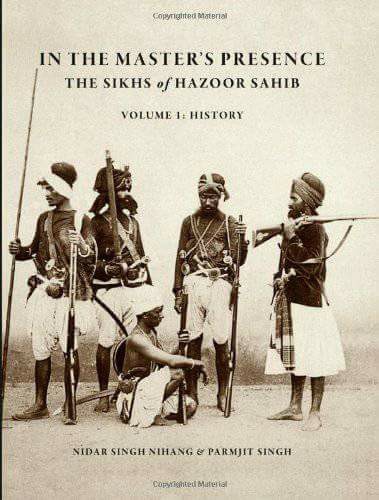BHAGO, MAI, the sole survivor of the battle of Khidrana, i.e. Muktsar (29 December 1705), was a descendant of Pero Shah, the younger brother of Bhai Langah, a Dhillon Jatt who had converted a Sikh during the time of Guru Arjan. Born at her ancestral village of Jhabal in present day Amritsar district of the Punjab, she was married to Nidhan Singh Varaich of Patti. A staunch Sikh by birth and upbringing, she was distressed to hear in 1705 that some of the Sikhs of her neighbourhood who had gone to Anandpur to fight for Guru Gobind Singh had deserted him under adverse conditions. She set off along with them and some other Sikhs to seek out the Guru, then travelling across the Malva region.
BHAG SINGH, SANT (1766-1839), of Kuri. a holy man widely respected in his time, was born the son of Bhai Hans Rai in 1766 at Qadirabad, a village in Gujrat district (now in Pakistan), where his grandfather, Gurbakhsh Singh, said to have been in the retinue of Guru Gobind Singh, settled after the Guru`s passing away at Nanded, in the Deccan. Bhag Singh learnt to read Gurmukhi letters and the Guru Granth Sahib at the village gurdwara. As he grew up, he made a pilgrimage to Nanded. Returning to the north, he visited Una, now in Himachal Pradesh, where he became a disciple of Baba Sahib Singh Bedi, a descendant of Guru Nanak in direct line.
DAKKHANI SIKHS or Sikhs of the Deccan, a distinctive ethnic community scattered in parts of Andhra Pradesh, Maharashtra and Karnataka, are the descendants of Punjabi Sikhs who went to the South during the eighteenth and the nineteenth centuries and permanently settled in what was then the princely state of Hyderabad. The first Punjabi Sikhs to travel to the South comprised the 300strong contingent which arrived at Nanded in 1708 in the train of Guru Gobind Singh (1666-1708).
DHARAM SINGH, BHAI (1666-1708), one of the Pan] Piare or the Five Beloved, the forerunners of Khalsa, came of farming stock. He was the son of Bhai Sant Ram and Mai Sabho, of Hastinapur, an ancient town on the right bank of the Ganges, 35 km northeast of Meerut (29°N, 77° 45`E). Dharam Das, as he was originally named, was born around 1666. As a young man, he fell into the company of a Sikh who introduced him to the teachings of the Gurus. He left home at the age of thirty in quest of further instruction. At the Sikh shrine ofNanak Piau, dedicated to Guru Nanak, he was advised to go to Guru Gobind Singh at Anandpur, where he arrived in 1698.
Explore the pivotal role of Nanu Singh in the Maharaja Duleep Singh's quest for Punjab's throne restoration, acting as the vital link in key communications.
NIDHAN SINGH, SANT (1882-1947), holy man popularly known as Hazur Sahibvale, was born the son of Bhai Uttam Singh of the village of Nidalori in Hoshiarpur district of the Punjab. He received religious instruction at the hands of Sant Divan Singh, popular in the area for his holiness. He left his home at the age of 20 and enlisted in the 5th Probyn`s Horse, a cavalry regiment of the Indian army, atJharisi. But he resigned within a year and set out on pilgrimage to Takhl Sachkhand Sri Hazur Sahib, Nanded, where he took up his permanent abode and found his calling in work in Guru ka Larigar.
Discover Bhai Phumman Singh, a celebrated 19th-century Sikh ragi from Punjab, famed for his kirtan and prowess in classical Indian music.



